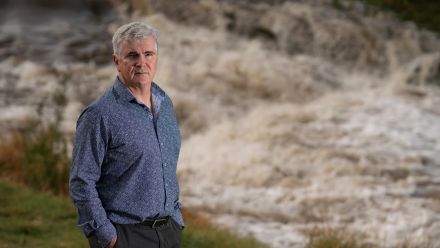Prescribed burning could be making Aussie forests more flammable
Disturbing natural forests with activities such as logging and prescribed burning can make them more flammable, landmark research from The Australian National University (ANU) and Curtin University has found.
To be better prepared for future bushfire seasons, the new research calls for a greater connection between forestry and fire science to understand how fire prevention strategies affect the natural environment.
“We’ve understood for a long time now that logging can make bushfires worse, but it’s only in the last few years that evidence is showing that prescribed burning could be doing the same thing,” lead researcher Professor David Lindenmayer, from ANU, said.
Co-author Associate Professor Philip Zylstra, from Curtin University, said: “If they’re too tall to catch fire, plants calm bushfires by slowing the wind beneath them. If disturbance kills those taller plants, replacements regrow from the ground and add to the fuel.
"Fire sensitive species thrived for millions of years because so many forests naturally create these less flammable environments."
Prescribed burns are a fire mitigation tool used with the aim of reducing fuel load to minimise the intensity and severity of fires.
However, while prescribed burns can sometimes decrease flammability in the short term, the way they disrupt forest ecosystems can create longer periods of additional flammability.
“Very frequent burning close to homes or control lines could create defendable spaces, but large, remote and infrequent burns maintain the landscape at maximum fire risk because they undermine the natural controls that forests place on fire," Associate Professor Zylstra said.
“We know that old forests tend to be cooler, more moist and more sheltered. By limiting disturbance, forests can reach an appropriate age where they can be better protected from the increased frequency and severity of Australian bushfires.”
The study challenges the notion that broadscale interventions are necessary to manage fire risk. The researchers argue that these are grounded in simplistic models that don’t account for long-term dynamics.
The research introduces a unified framework that enables the prediction of areas where disturbance is likely to cause a surge in flammability and bushfire risk.
This predictive approach allows for better informed and targeted management strategies.
“We need to invest heavily in rapid response remote area firefighting specialists and embrace new technologies that allow us to detect fires and suppress them faster,” Professor Lindenmayer said.
Advances in drone technologies and the application of AI can help detect small fires and even contain them before they develop.
“We need to be thinking about forestry and fire management in a more holistic way and look to limit actions that could be increasing flammability,” Professor Lindenmayer said.
The research is published in the journal Biological Reviews.


